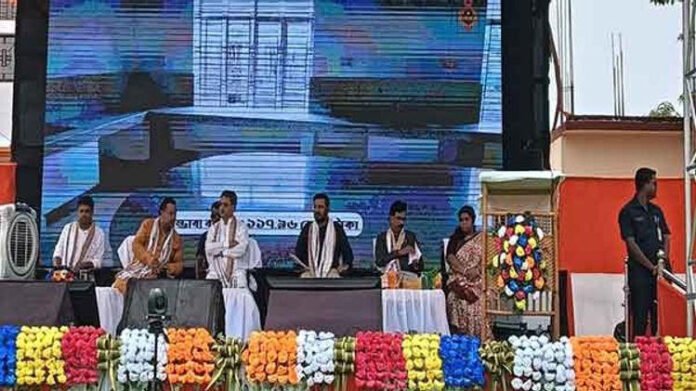The Tripura government has inaugurated six new school infrastructure projects across the state. The initiative is part of the state’s broader vision to strengthen public education and ensure that students from all backgrounds, especially those in rural and tribal areas, receive quality learning environments.
Chief Minister Dr. Manik Saha, who has consistently emphasized education as a cornerstone of Tripura’s development, inaugurated the new facilities in a series of ceremonies held in April 2025. The new infrastructures include upgraded school buildings, smart classrooms, science labs, libraries, and sanitation blocks across different districts of the state.
A Commitment to Inclusive Growth
The construction of these six new school facilities—spread across Dhalai, Gomati, Khowai, Sepahijala, Unakoti, and South Tripura districts—reflects the government’s commitment to inclusive development. Many of these districts have historically faced challenges in terms of educational infrastructure, with students often studying in outdated or inadequate buildings.
Speaking at the inauguration ceremony in Dhalai, CM Saha said, “Education is the most powerful weapon we can use to change the future of our children and our state. With these new schools, we are ensuring that no child is left behind, regardless of where they live.”
The Chief Minister further noted that the new facilities are designed not only for academic learning but also for holistic development, providing students with access to digital learning tools, extracurricular activities, and improved hygiene infrastructure.
Key Features of the Infrastructure Upgrade
Each of the six schools received tailored improvements based on the needs of their respective communities. Common features include:
- Smart Classrooms equipped with interactive boards and internet access to integrate digital learning.
- STEM Laboratories to encourage hands-on learning in science and mathematics.
- Well-stocked Libraries aimed at nurturing a reading culture among students.
- Gender-Sensitive Sanitation Facilities to ensure hygiene and comfort for all students, especially adolescent girls.
- Playgrounds and Recreational Spaces to promote physical education and well-being.
The initiative is supported by the Samagra Shiksha Abhiyan, with partial funding from the central government and execution overseen by the Department of School Education, Tripura.
Bridging the Rural-Urban Education Divide
Tripura’s education sector has made significant progress in the last few years, but challenges remain, especially in remote and tribal-dominated regions. Many schools still lack basic infrastructure, and dropout rates tend to spike after primary school due to poor facilities and accessibility issues.
Education Minister Ratan Lal Nath highlighted that this expansion is only the beginning. “Our goal is to transform government schools into centers of excellence. We are working on training teachers, upgrading more facilities, and introducing vocational and life-skill training in the curriculum.”
He also mentioned that over 300 schools across the state are being audited for infrastructure needs, with plans for further upgrades in the coming fiscal year.
A Community-Centric Approach
What sets this initiative apart is the involvement of local communities in the planning and implementation process. Village councils, school management committees, and parents were actively consulted to ensure that the facilities met actual on-ground requirements.
In Khowai, where one of the schools now boasts a fully digital lab and new library, the local community organized a celebration with traditional dances and cultural performances, showcasing their support and pride in the new development.
“This school is not just a building — it’s a symbol of hope,” said a parent in the Gomati district. “Our children now have the same opportunities as those in bigger cities.”
The Road Ahead
As Tripura looks toward a future where every child has access to quality education, this infrastructure boost is a significant step in the right direction. The government has also committed to recruiting more teachers, introducing technology-integrated syllabi, and reducing the student-teacher ratio.
With education emerging as a key pillar in Tripura’s development model, the expansion of school infrastructure signals a long-term investment in human capital — one that could transform the state’s socio-economic landscape in the years to come.

